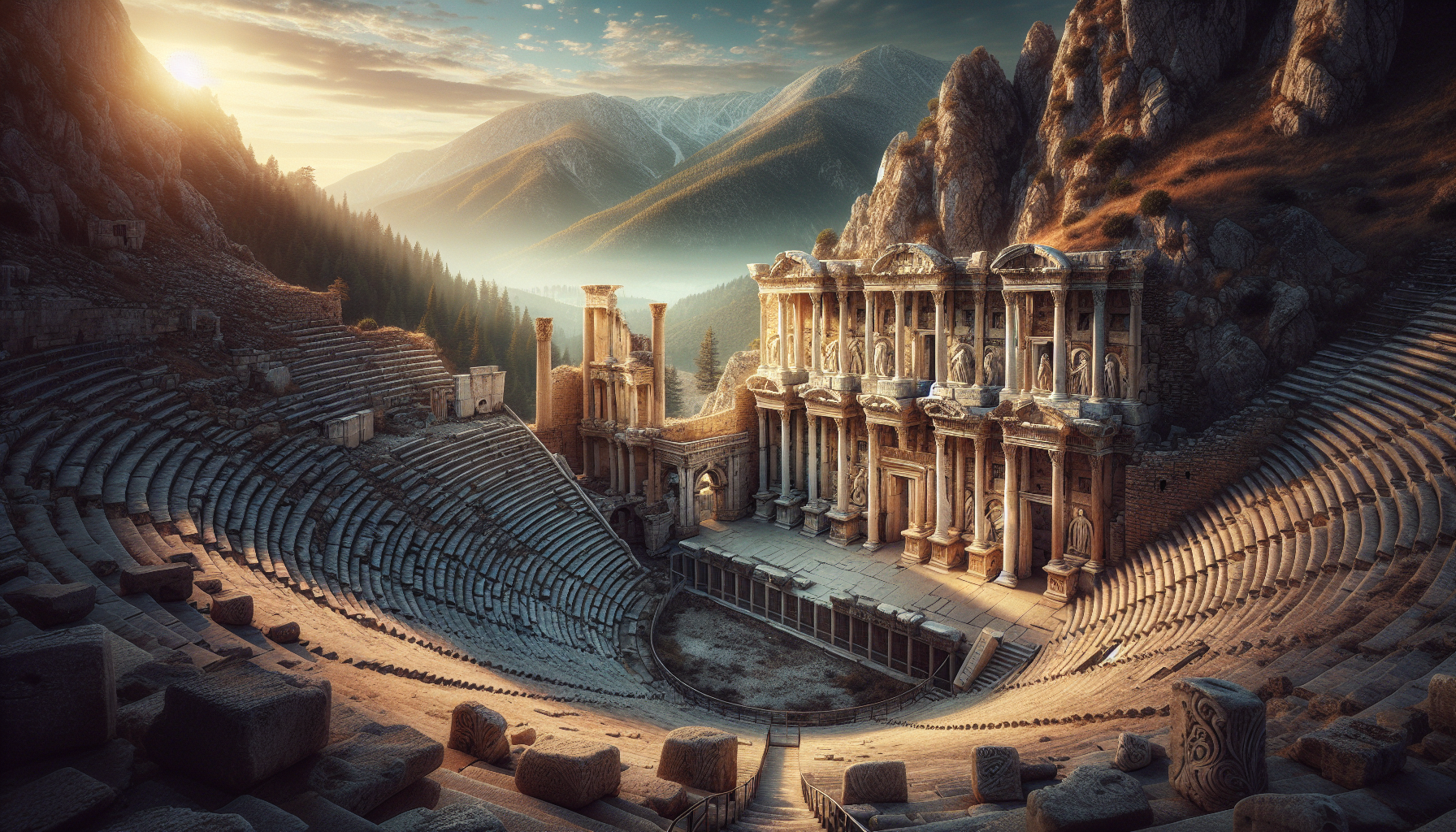Nestled in the Taurus Mountains of southwestern Turkey, the ancient city of Sagalassos stands as a testament to the rich history of Anatolia. This archeological wonder, once a thriving metropolis of the Hellenistic and Roman periods, offers visitors a glimpse into the grandeur of bygone eras. With its well-preserved ruins and stunning mountain backdrop, Sagalassos has become a must-visit destination for history buffs and adventure seekers alike.
Travelers to Sagalassos can look forward to exploring its impressive architectural marvels, uncovering the fascinating story of its excavation, and learning about the legendary love tale that has captivated locals for generations. This guide delves into the city’s historical significance, highlights its key attractions, and provides essential tips to help plan an unforgettable journey to this hidden gem in Turkey. From its awe-inspiring ruins to practical travel advice, this article aims to equip visitors with everything they need to know about Sagalassos.
Table of Contents
The Ancient City of Sagalassos: An Overview
Location and Geography
Nestled in the Western Taurus mountains of southwestern Turkey, Sagalassos stands as a testament to ancient civilization. The archeological site is situated approximately 110 km north of Antalya, a popular port and holiday resort . Perched on the south-facing slopes at an altitude of 1450–1700 meters, Sagalassos overlooks the present-day town of Ağlasun in the Burdur province .
The region’s distinctive landscape features a series of lakes, earning it the moniker “Lake District” . This mountainous terrain, coupled with its strategic location, played a crucial role in shaping the city’s history and development. The remote and elevated position of Sagalassos has contributed to its exceptional preservation, making it one of the best-preserved ancient cities in the Mediterranean .
Historical Significance
The history of Sagalassos spans millennia, with the first traces of human activity dating back to around 12,000 years ago . The region saw the establishment of farming communities along Lake Burdur’s shores during the eighth millennium BC . However, Sagalassos itself likely gained prominence later, possibly in the 14th century BC, when Hittite documents mentioned a mountain site called Salawassa .
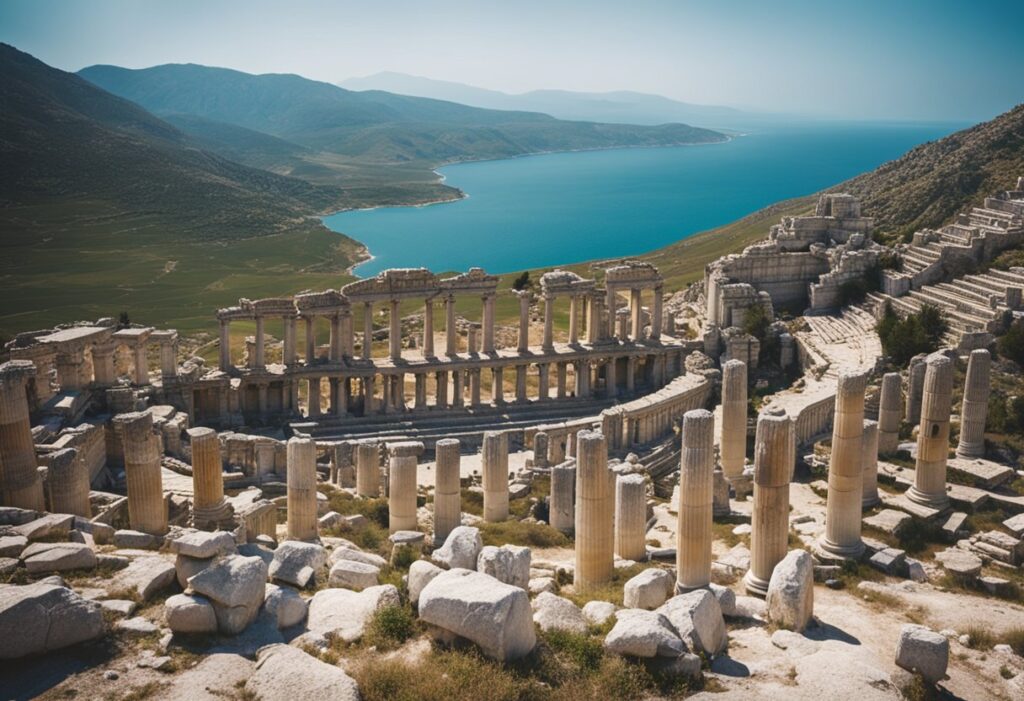
The city’s development accelerated under Phrygian and Lydian rule, gradually evolving into an urban center . During the Persian period, Sagalassos, along with the broader Pisidia region, gained a reputation for its warlike and rebellious nature . This reputation was put to the test in 333 BCE when Alexander the Great encountered fierce resistance while conquering the area .
Under Roman rule, Sagalassos flourished, becoming the metropolis of Pisidia . The city’s prosperity was built on its fertile territory, which produced surplus grain and olives, as well as its renowned pottery industry that produced high-quality tableware known as “Sagalassos red slip ware” . Emperor Hadrian particularly favored Sagalassos, designating it as the “first city” of the province and the center of the imperial cult .
Archeological Discoveries
The archeological excavations at Sagalassos, led by Marc Waelkens of the Catholic University of Leuven since 1990, have unearthed a wealth of information about the ancient city 2. The site has revealed a remarkable array of well-preserved structures that offer insights into both public and private life in antiquity 2.
Among the most impressive discoveries are:
- A 9,000-seat theater
- A council hall (bouleuterion)
- A library
- Rock-carved tombs
- Temples and baths
- The Fountain of Antoninler, which still has its original façade and remains functional 2
One of the most significant finds came in August 2007 when archeologists uncovered a colossal statue of Emperor Hadrian, estimated to have stood 4-5 meters tall . This discovery was followed by the unearthing of a head statue of Faustina the Elder, wife of Emperor Antoninus Pius, in August 2008 . Later that month, another colossal portrait head, this time of Marcus Aurelius, was found .
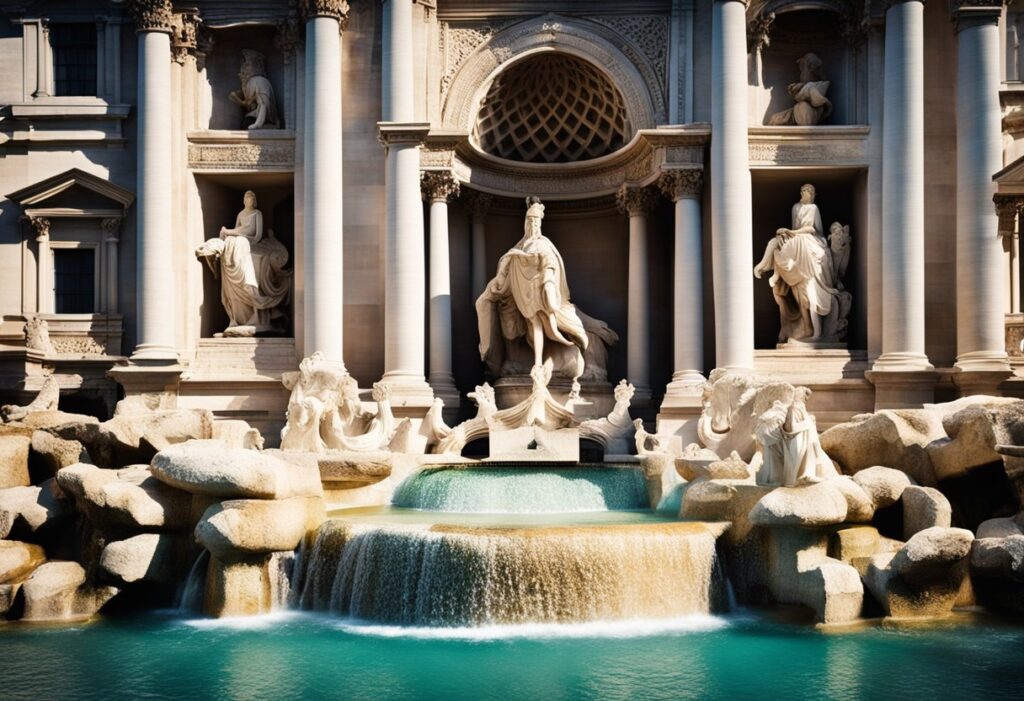
These statues, along with other artifacts, not only showcase the city’s wealth and importance but also provide valuable insights into Roman political systems, provincial governance, and ancient art techniques . The ongoing excavations continue to uncover new treasures, making Sagalassos an active and exciting archeological site that attracts researchers and tourists alike 2.
Uncovering Sagalassos: The Excavation Journey
Marc Waelkens and His Team
The excavation of Sagalassos began in 1990 under the leadership of Marc Waelkens from the Catholic University of Leuven, Belgium 3. Waelkens, a professor of archeology and an expert on ancient cultures of Turkey, has directed one of the largest and most interdisciplinary archeology projects in the Mediterranean 3. His team has undertaken a comprehensive approach to uncover the secrets of this ancient city, combining traditional archeological methods with cutting-edge scientific techniques.
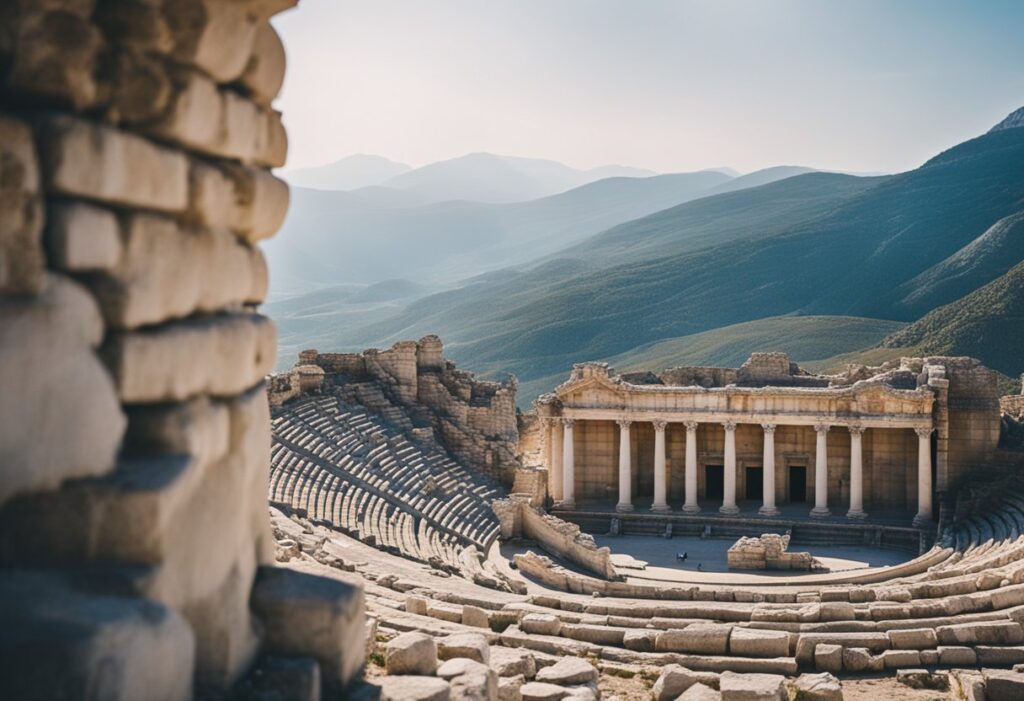
The excavation project at Sagalassos has grown into a large-scale, interdisciplinary endeavor 4. The team has employed various methods to study the site, including:
- Intensive urban and geophysical surveys
- Excavations in domestic and industrial areas
- Comprehensive surveys of the surrounding territory
This multifaceted approach has allowed researchers to document not only a thousand years of occupation from Alexander the Great to the seventh century but also to reconstruct the changing settlement patterns, vegetation history, farming practices, landscape formation, and climatic changes over the last 10,000 years 4.
Major Discoveries
The excavations at Sagalassos have yielded numerous significant findings, shedding light on the city’s rich history and its importance in the ancient world. Some of the most notable discoveries include:
- A 9,000-seat outdoor theater, showcasing the city’s cultural significance 3
- A complex of Roman Baths, highlighting the advanced engineering and luxurious lifestyle of the inhabitants 3
- A 60-room mansion, providing insights into elite living in ancient times 3
- A shopping street and food market, offering a glimpse into everyday life 3
- A library, indicating the city’s intellectual pursuits 3
- Potters’ workshops, demonstrating the city’s industrial capabilities 3
One of the most exciting aspects of the excavations has been the discovery of several over-life-size, exquisitely carved sculptures of Roman emperors. These findings have been hailed as one of the top ten discoveries of 2008 by the Archeological Institute of America 3. The most notable statues include:
- A colossal statue of Emperor Hadrian, found in 2007, estimated to have stood 4-5 meters tall 5
- A portrait head of the Roman empress Faustina, wife of Emperor Antoninus Pius (r. A.D. 138-161), uncovered in August 2008 4
- A colossal portrait head of Marcus Aurelius, also discovered in August 2008 4
These statues, found in remarkably good condition, not only showcase the city’s wealth and importance but also provide valuable insights into Roman political systems, provincial governance, and ancient art techniques 5.
Restoration Efforts
Alongside the excavation work, significant efforts have been made to restore and preserve the uncovered structures. The team has completed or nearly completed four major restoration projects in the monumental city center 4. These restoration efforts aim to protect the site’s integrity while making it accessible to visitors and researchers alike.
In 2015, the Global Heritage Fund, supported by the Vehbi Koç Foundation, initiated additional excavation and restoration work 6. This project focuses on the Southeast Gate of the Upper Agora and offers training opportunities to architecture, history of art, and conservation students from various universities, including Koç University, Middle East Technical University, and Mardin Artuklu University 6.
The ongoing excavations and restorations at Sagalassos continue to uncover new treasures and insights into this ancient city. As one of the best-preserved ancient cities in the Mediterranean, Sagalassos offers a unique opportunity to study and experience the grandeur of the Hellenistic and Roman periods in Anatolia.
Architectural Marvels of Sagalassos
The Grand Theater
Perched at an impressive altitude of 1600 meters, the ancient theater of Sagalassos stands as a testament to the city’s architectural prowess 7. This remarkable structure, with a seating capacity of approximately 9,000 spectators, offers visitors a truly unique experience 8. The theater’s location provides breathtaking panoramic views of the surrounding landscape, making it one of the most awe-inspiring Roman theaters in the region 7.
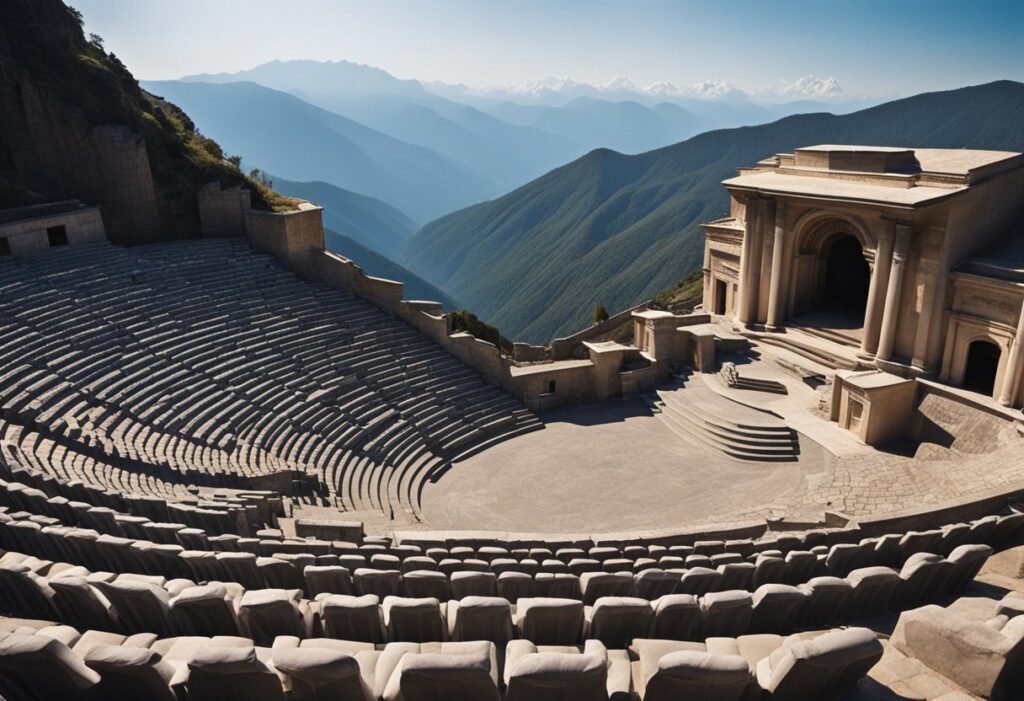
Built into the hillside, the theater showcases the ingenious urban planning of Sagalassos 5. The architects skillfully adapted the challenging terrain to create this monumental structure, demonstrating their technical expertise in engineering and design 5. The theater served as a hub for various performances and public gatherings, reflecting the cultural richness of the ancient city 8.
Today, visitors can explore the theater in its wonderfully preserved state. The Belgian archeologist Marc Waelkens and his team have done an exceptional job in stabilizing the structure while maintaining its authentic ruined appearance 9. This approach allows visitors to experience the “enjoyable experience of a genuine ruin” while imagining the bustling activity that once took place within its walls 9.
The Antonine Nymphaeum
Another architectural marvel that captivates visitors is the Antonine Nymphaeum, a monumental fountain dating back to the 2nd century AD 8. This grand structure, dedicated to the Roman Emperor Antoninus Pius, served as a vital water source for the city and stands as a symbol of Sagalassos’ prosperity 8.
The Nymphaeum’s construction showcases the city’s commitment to architectural excellence. Built between 161-180 AD, it features an impressive use of seven different colored stones, including Afyon marble, which creates stunning light effects when it interacts with water 7. The fountain’s dimensions, intricate sculptures nestled in niches, and cascading waterfalls make it a true masterpiece of Roman engineering and artistry 7.
Recent restoration efforts have breathed new life into this magnificent structure. The fountain, which stretches 28 meters in length and stands 9 meters tall, has been carefully reconstructed using original architectural pieces 10. This painstaking work, completed in 2010, allows visitors to appreciate the Nymphaeum’s grandeur as it would have appeared 1,800 years ago 7.
Other Notable Structures
Sagalassos boasts several other remarkable structures that showcase the city’s architectural diversity and historical significance:
- The Hadrianic Nymphaeum: This two-story fountain, dedicated to Emperor Hadrian, once stood 17 meters high 10. Although only partially preserved, its remains offer a glimpse into the city’s monumental architecture and its connection to imperial patronage.
- The Northwest Heroon: Built around 1 AD, this small monument honors a local benefactor 10. Recently re-erected using original stones, it features a 2.5-meter-high statue of a young aristocrat, highlighting the city’s sculptural artistry.
- The Library: Constructed around 120 AD, this building exemplifies the generosity of Sagalassos’ elite families 10. Its architectural similarities to other structures in the city and its well-preserved inscriptions provide valuable insights into the city’s social and cultural life.
- The Roman Baths: Among the best-preserved structures in Sagalassos, the baths complex showcases the advanced engineering skills of the time 8. Visitors can explore various rooms, including the frigidarium, tepidarium, and caldarium, gaining a deeper understanding of daily life in ancient Sagalassos.
- The Agora: Serving as the heart of social and commercial life, the Agora was surrounded by colonnades and public buildings 8. This open space offers visitors a chance to imagine the bustling activity that once characterized the city’s marketplace.
These architectural marvels, set against the backdrop of Sagalassos’ mountainous terrain, offer visitors a unique opportunity to step back in time and experience the grandeur of this ancient city. The ongoing excavation and restoration efforts continue to uncover new treasures, making Sagalassos an ever-evolving destination for history enthusiasts and travelers alike.
The Legendary Love Story of Sagalassos
Origins of the Legend
While the archeological site of Sagalassos has revealed numerous fascinating aspects of ancient life, the city’s legendary love story remains shrouded in mystery. The origins of this tale are not explicitly documented in the available historical records. However, the rich history and cultural significance of Sagalassos provide a fertile ground for such legends to take root and flourish.
Sagalassos, with its breathtaking location in the western Taurus Mountains, has been continuously occupied since prehistoric times 11. The city’s dramatic setting, perched on steep hillsides overlooking the Ağlasun Valley, creates an almost mythical atmosphere that lends itself to romantic narratives 7. The natural springs formed by mountain snow melt, which provided water to the ancient city, could have easily inspired tales of love and devotion 7.
Cultural Impact
The legendary love story of Sagalassos, while not explicitly detailed in historical records, has likely had a significant impact on the cultural identity of the region. The city’s rich history, spanning from the Middle Paleolithic period (200,000-45,000 B.C.) to the Byzantine era, provides a vast canvas for the development and evolution of such legends 11.
One of the most intriguing structures in Sagalassos that might be connected to the love legend is the Heroon, a monumental tower-like building standing 15 meters tall. Built around the 1st century AD, this structure was typically used to honor a hero and their deeds 7. While the identity of the person honored by this Heroon remains unknown, it’s certain that they held great importance to the people of Sagalassos. The building’s reliefs of dancing girls, possibly related to the Cult of Dionysus, add an element of celebration and joy that could be associated with a love story 7.
The theater of Sagalassos, with its capacity of 9,000 people and its location at an altitude of 1,600 meters, offers a majestic backdrop for imagining ancient performances 7. It’s not difficult to envision how love stories might have been dramatized here, leaving a lasting impression on the collective memory of the city’s inhabitants.
Modern Interpretations
In recent years, the ongoing excavations and research at Sagalassos have brought new life to the city’s history, potentially influencing modern interpretations of its legendary love story. The work of KU Leuven researchers, led initially by Professor Marc Waelkens and now by Professor Jeroen Poblome, has focused on uncovering the stories of the people who once called Sagalassos home 11.
One fascinating development has been the reconstruction of faces based on well-preserved skeletal remains found at the site. This collaboration between KU Leuven and the University of Burdur (Turkey) has resulted in two strikingly lifelike facial reconstructions 11. These reconstructions provide a tangible connection to the ancient inhabitants of Sagalassos, potentially inspiring new interpretations of the city’s legendary love story.
The ongoing research at Sagalassos, which combines archeology, geography, ecology, and data analysis, continues to reveal new insights into the city’s past 11. As more information comes to light about the daily lives, beliefs, and customs of the people of Sagalassos, it’s likely that the legendary love story will continue to evolve and capture the imagination of visitors and researchers alike.
While the specific details of Sagalassos’ legendary love story may remain elusive, the city’s rich history, dramatic setting, and ongoing archeological discoveries provide a captivating backdrop for romantic tales. As research continues, new interpretations of this legend may emerge, further enhancing Sagalassos’ appeal as a destination that combines historical significance with the timeless allure of a great love story.
Planning Your Visit to Sagalassos
Best Time to Visit
Travelers planning a trip to Sagalassos should consider the seasonal variations in weather to make the most of their visit. The ideal time to explore this ancient Graeco-Roman city is during the spring and fall months 12. During these seasons, visitors can enjoy mild and comfortable temperatures, perfect for exploring the well-preserved ruins and taking in the impressive architecture 12.
It’s worth noting that summers in Sagalassos can be quite hot, which might make extensive outdoor exploration challenging 12. On the other hand, winters bring cold temperatures and snow to the region, potentially limiting access to certain areas of the site 12. By choosing to visit in spring or fall, tourists can strike a balance between pleasant weather and optimal sightseeing conditions.
Transportation Options
Reaching Sagalassos requires some planning, as the site is located in the Taurus Mountains of southwestern Turkey. The most convenient way to get there is by renting a car or joining a guided tour from nearby cities such as Antalya or Burdur 12. This option provides flexibility and allows visitors to enjoy the scenic drive through the stunning Taurus mountains 13.
For those who prefer not to drive, especially considering the challenging mountain roads with hairpin turns, alternative options are available:
- Taxi: Hiring a taxi from Antalya is possible, though it may be quite expensive due to the distance 13.
- Tourist Travel Agencies: Some agencies offer bus tours to Sagalassos, which can be a comfortable and informative option 13.
- Public Transportation: While limited, it is possible to take a bus or dolmuş (shared taxi) to the town of Aglasun 12. From there, visitors can take a taxi or hike up to the archeological site.
It’s important to note that Sagalassos is located about 111 km (69 miles) north of Antalya, near the modern city of Ağlasun 13. The journey from Antalya city center typically takes about two hours by car 13.
Accommodation Nearby
While Sagalassos itself doesn’t offer on-site accommodation, there are several options available in the surrounding area. The nearby town of Aglasun, located approximately 7 km from the archeological site, serves as the primary base for visitors 12.
Accommodation options in Aglasun include:
- Small hotels
- Pensions
- Guesthouses 12
These establishments provide a convenient place to stay, with most being about a 20-minute drive from the Sagalassos archeological site 14.
For those seeking a more rustic experience, camping is also possible in the surrounding countryside 15. However, it’s important to note that camping facilities are basic, so visitors should come prepared 12.
When planning your visit, it’s recommended to allocate at least 2-3 hours to fully explore the Sagalassos site 13. This timeframe allows visitors to take in the major attractions and appreciate the city’s historical significance. It’s also worth checking with the security guard about the possibility of leaving and re-entering the site, should you need to take a break or grab refreshments 13.
By considering these factors – the best time to visit, transportation options, and nearby accommodation – visitors can ensure a smooth and enjoyable trip to Sagalassos, immersing themselves in the rich history and stunning architecture of this ancient Graeco-Roman city.
Conclusion
Sagalassos stands as a testament to Turkey’s rich historical tapestry, offering visitors a unique glimpse into ancient Anatolian life. This well-preserved city, with its impressive theater, grand nymphaeum, and other architectural marvels, has the power to transport visitors back in time. The ongoing excavations continue to uncover new treasures, making Sagalassos an ever-evolving destination for history buffs and adventure seekers alike.
For those planning a trip, spring and fall provide the best conditions to explore this mountaintop wonder. With its breathtaking views and fascinating ruins, Sagalassos showcases Turkey’s diverse cultural heritage. Whether you’re drawn by the city’s archeological significance or its legendary love story, a visit to Sagalassos promises an unforgettable journey through time in one of Turkey’s most captivating destinations.
References
[1] – https://en.wikipedia.org/wiki/Sagalassos
[2] – https://www.historyhit.com/locations/sagalassos/
[3] – https://www.getty.edu/visit/events/waelkens_lecture.html
[4] – https://interactive.archeology.org/sagalassos/
[5] – https://whc.unesco.org/en/tentativelists/5409/
[6] – https://encyclopedia.vkv.org.tr/Categories/Projects/Culture/Sagalassos-Excavations
[7] – https://www.turkishmuseums.com/blog/detail/4-must-see-artifacts-in-sagalassos/10056/4
[8] – https://visitturkey.in/ancient-city/sagalassos/
[9] – https://www.somewherewonderful.com/a-visit-to-sagalassos/
[10] – https://ertungaecir.com/blog/the-ancient-city-of-sagalassos/
[11] – https://stories.kuleuven.be/en/stories/uncovering-sagalassos-secrets-one-stone-at-a-time
[12] – https://en.tripadvisor.com.hk/ShowUserReviews-g781299-d2459960-r674805788-Sagalassos-Aglasun_Burdur_Province.html
[13] – https://turkeytravelplanner.com/sagalassos-turkey-ancient-city/
[14] – https://www.tripadvisor.com/ShowTopic-g297962-i772-k14490711-Burdur_to_Aglasun_Sagalassos_bus_or_taxi_options-Antalya_Turkish_Mediterranean_Coast.html
[15] – https://www.tripadvisor.com/ShowUserReviews-g781299-d2459960-r706237012-Sagalassos-Aglasun_Burdur_Province.html
